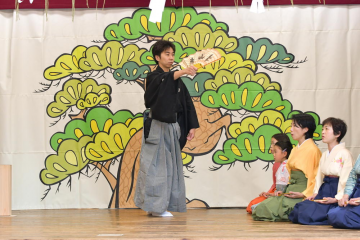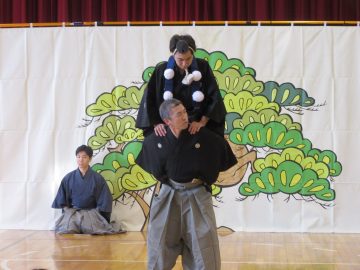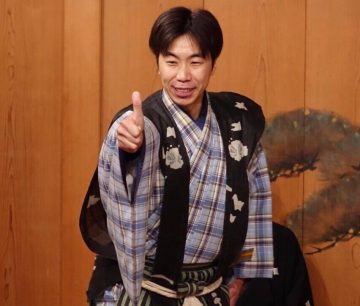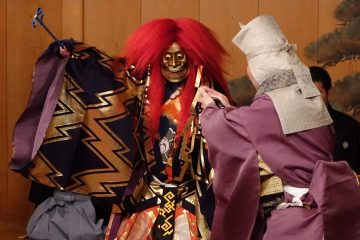Kanagawa and Japanese Traditional Culture Festival Special "Fujisawa-juku and Yugyo no Bon" (Fujisawa Edition)
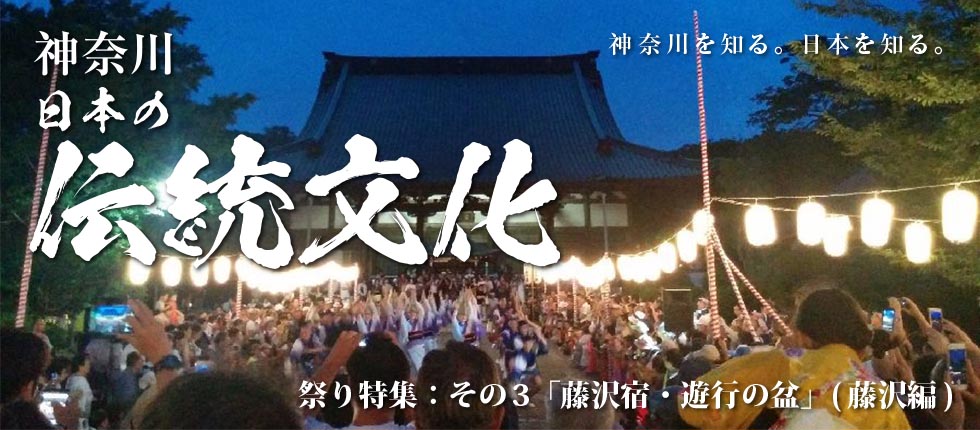
◇The "dancing nembutsu" that is said to be the origin of Bon Odori in various regions began at Yugyoji Temple in Fujisawa◇
When and how did the Fujisawajuku Yugyo Bon festival begin?
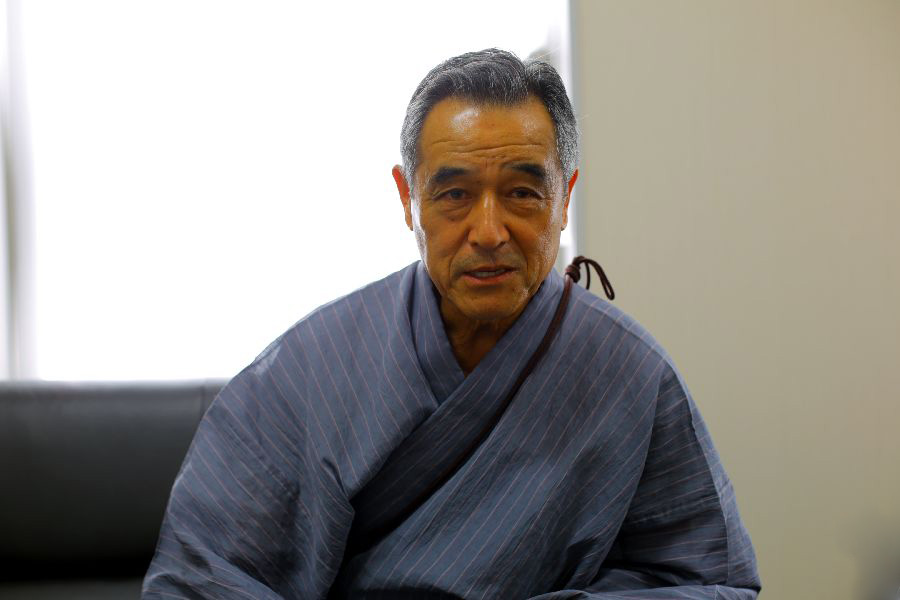
Chairman Masuda
This festival began in 2005 as part of a city revitalization effort, with the desire to bring back the bustle to the shopping district around Fujisawa Station and to raise the city's profile nationwide. When you think of Shonan, the first things that come to mind are places like Kamakura and Chigasaki. Fujisawa is not often mentioned, and it is still relatively unknown nationwide. The idea came from thinking about how to hold a festival that is unique to Fujisawa, with a sense of originality that is not found anywhere else. Fujisawa once developed as a temple town for Seijokoji Temple, the head temple of the Jishu sect, and as a post town on the Tokaido. Seijokoji Temple is also known as "Yugyo-ji Temple" because Ippen Shonin, the founder of the Jishu sect, traveled around the country to train. It is said that the roots of Bon Odori are in "dancing nembutsu," which is said to have occurred when a disciple suddenly started dancing while chanting nembutsu, and the people watching followed suit and started dancing. I'm sure they would not have been able to attract the attention of the people if they had only muttered prayers, so they would have chanted prayers as if singing and dancing. If dancing prayers have been passed down at Yugyoji Temple, then Fujisawa, where the head temple is located, could be said to be the origin of Bon Odori in other areas. Making use of this history and culture that remains in Fujisawa, the "Fujisawa-juku Yugyō no Bon" was born.
What exactly have you done to revitalize the town through Bon Odori?
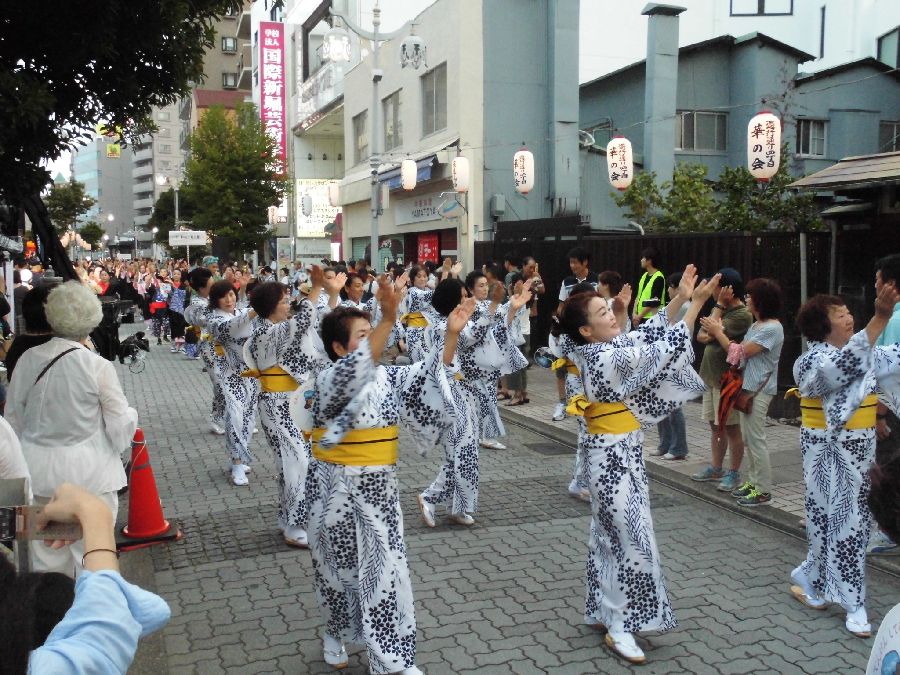
Scenes from the Yugyobayashi Contest
Initially, we spent a year visiting famous Bon Odori regions around the country and researching Bon Odori events. Even if we thought a place was great and we really wanted to host it, there were times when it was difficult to realize right away due to various constraints depending on the region, such as budgets. In order to revitalize the town, we are trying to invite a different dance or festival every year as a plus one in addition to the three major Bon Odori in Japan, as "a festival where you can see distinctive Bon Odori on a national scale all at once when you come to Fujisawa, the land associated with Bon Odori." In particular, Nishimonai Bon Odori, one of the three major Bon Odori in Japan and designated as an Important Intangible Folk Cultural Property by the government, has been participating since the first event, and we have had a really good relationship with them.
Furthermore, to promote Fujisawa nationwide, we asked experts to create a new Fujisawa Bon Odori dance called "Shonan Fujisawa Yugyo Odori." The dance was produced and supervised by playwright and director Shiraishi Masashi, who is an associate of playwright Terayama Shuji. It is based on the motif of "dancing nembutsu" handed down at Yugyoji Temple, and is made up of six dance groups, with the main dance called "Yugyo Bayashi." A Yugyogayashi contest is also held in which local citizens can participate by dancing, and the climax of the festival is a large Bon Odori festival held in the grounds of Yugyoji Temple.
What were some of the unique features of this year's Fujisawa-juku Yugyo Bon Festival?
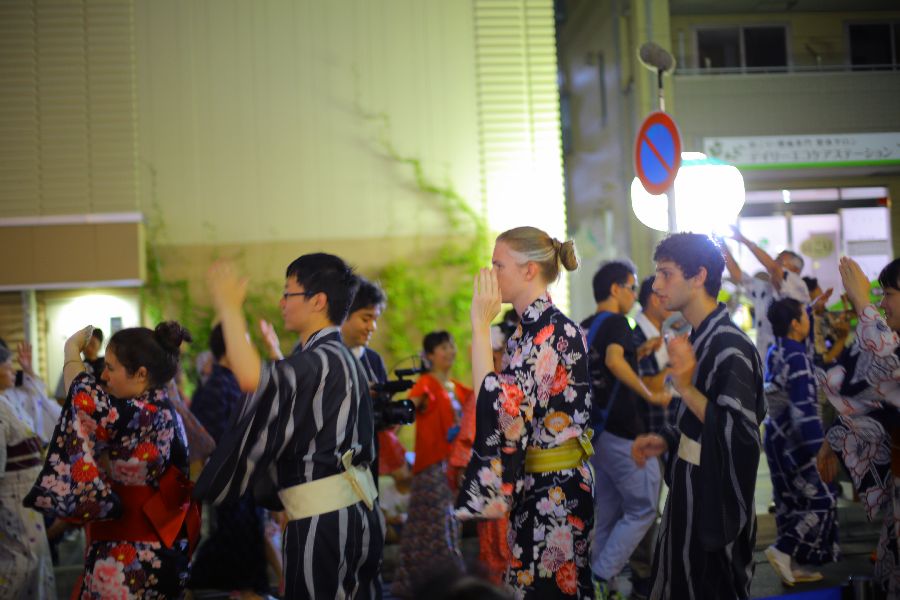
Foreigners also participated
This year, in addition to the three major Bon Odori festivals in Japan, Nishimonai Bon Odori, Gujo Odori, and Awa Odori, Morioka Sansa Odori, a summer festival representing the Tohoku region, was invited to perform a Bon Odori dance with drums at a light-hearted tempo. As a new initiative, a mini festival and Bon Odori was held at the "Ranburu Shopping Arcade" at the south exit of the station, and at Sunpalette at the north exit. In addition, this year, a group of international students from Tama University Shonan Campus and foreigners living in the city appeared, making the festival more international than ever before. There are still few foreign participants, so we hope that more people will join in and enjoy it in the future.
At the Tokyo Olympics in 2020, sailing events will be held at Enoshima. What are your thoughts on how to develop this festival?
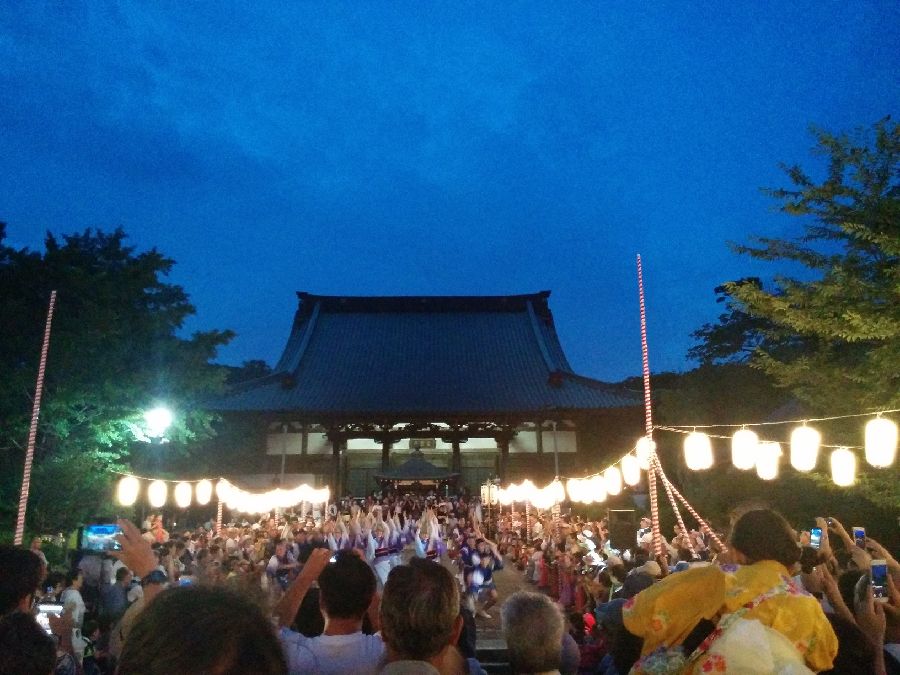
Awa Odori dance performed in the grounds of Yugyoji Temple
The recognition of Yugyo no Bon is increasing year by year, and people from not only within the city but also from far away come to see the Bon Odori from all over the country. Bon Odori, where everyone from small children to the elderly can sing and dance together, is indeed a wonderful traditional culture. We would like to take on the challenge of taking advantage of the opportunity presented by the Tokyo Olympic sailing competition to be held at Enoshima in 2020. To that end, we would like to first disseminate information together with everyone who participated in Yugyo no Bon and increase the recognition of Fujisawa. We hope that this festival will lead to the success of the Enoshima sailing competition and attract more visitors.
It seems like it's more fun to participate in the Bon Odori than just to watch. I hope that by inviting various people to participate and using the Bon Odori as a base, we can further increase economic interdependence. Thank you very much.
What is Gujo Dance?
The longest-running Bon Odori festival in Japan, which is danced for 33 nights from mid-July to early September. For 400 years, singing and dancing have been carried out in the castle town of Gujo Hachiman (Gifu Prefecture). The Gujo Odori Preservation Society from the original Gujo Hachiman, Gifu Prefecture will perform music and dancing.
What is Nishimonai Bon Odori?
This traditional dance has been designated an Important Intangible Folk Cultural Property of Japan and has been handed down for about 700 years in Ugo Town, Akita Prefecture. It is characterized by lively music and beautiful dancing, and the dancers wear ancestral hem-stitched kimonos and beautifully curved straw hats. Young women who are minors dance wearing headgear called "Hikozazukin" that completely covers their heads. They have performed as guests every year since the first Bon festival parade.
What is Awa Odori?
Awa Odori has a history of about 400 years. It is held all over the country, including in Tokushima, the birthplace of the dance. This year, the Suzaku Ren, a member of the Koenji Awa Odori Ren Association, and the Shonan Nagisa Ren, a local dance group from Fujisawa, will be performing at the Yugyo-no-Bon festival.
What is Morioka Sansa Odori?
This summer festival, which represents the Tohoku region, is held every year from August 1st to 4th in Morioka City, Iwate Prefecture. A brave drum parade that achieved the world record for simultaneous performance of Japanese drums and graceful, elegant dancing light up the summer night sky. The traditional Sansa Odori dance, which has been handed down in Morioka City and the surrounding area, has different choreography and costumes depending on the region.
Future activities
The 44th Fujisawa Citizens' Festival is being held! - Don't miss the huge parade! -
September 23rd (Saturday) Around Fujisawa Station and Akibadai Park
Stage Events and Food Stalls
September 24th (Sunday) Around Fujisawa Station and Yugyoji Temple grounds
Fujisawa Station North-South Grand Parade, various stage events, pro wrestling shows, food stalls, etc.
